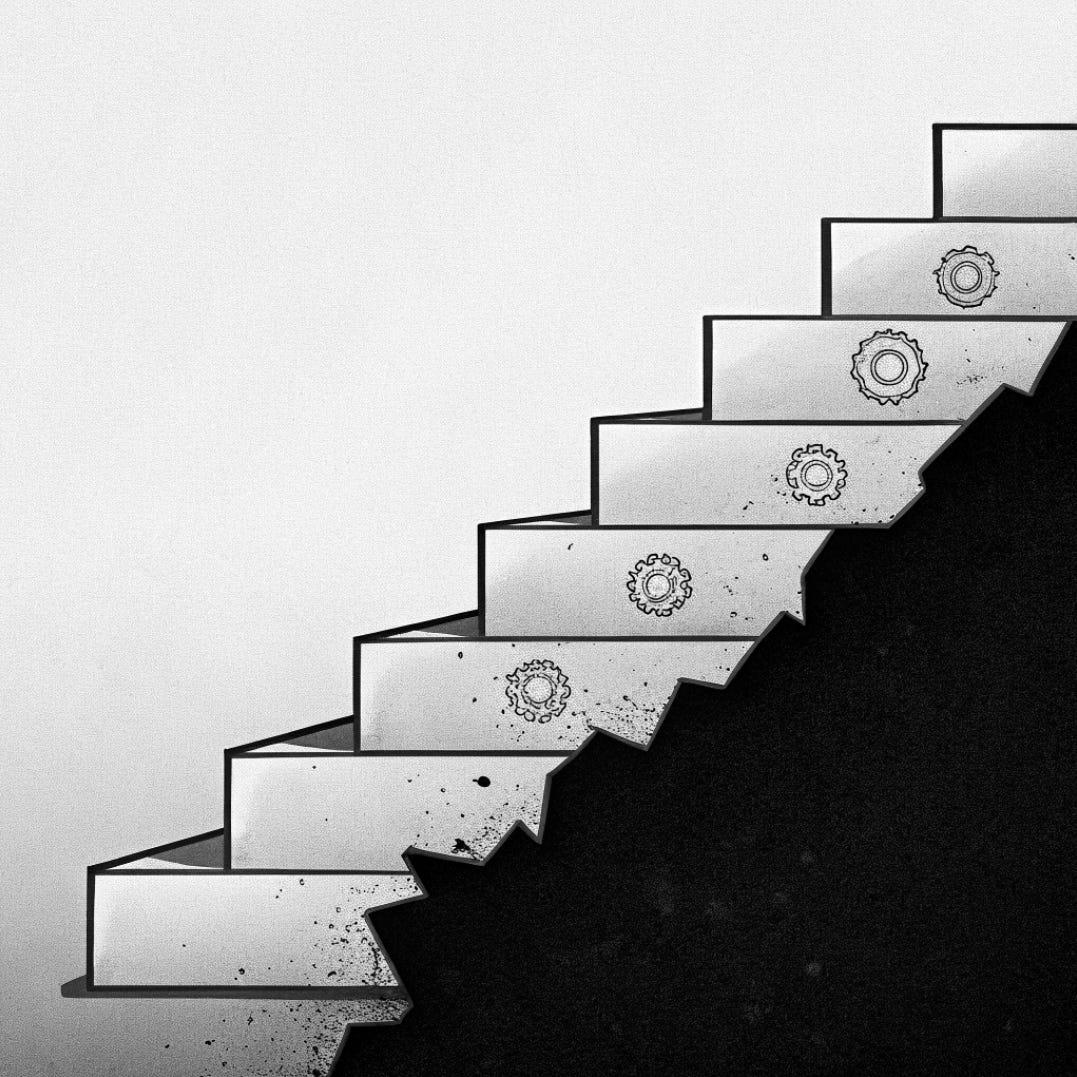
Channeling our natural competitive spirit productively has brought humanity to the semi-comfortable place we are at today, perhaps more than any other force.
This place is one of abundance; a world where more people die of obesity than starvation. For generations now, we have been reaping the fruits of this setup. Through the decades of plenty, what used to be a tool and best practice however, has hardened into dogma. Fiercely defended by economists and our entire institutional structure, our competitive market economy is no longer a structure we employ after careful consideration - it has become our default.
Sure, there are institutions, governments, laws, and regulations. But barring very few exceptions1, we have come to accept the wisdom of markets as guiding our collective development, from which technologies to develop to how they are integrated into our lives. Why do we have smartphones and use them the way we do? No one decides on these issues in a reflected manner, as we have come to learn that attempts at such steering of our collective lives often end worse than not doing anything.
As humans, we set our default state and expectations of the world based on our lived experience and the recent past. Accordingly, most people alive have truly and deeply accepted the idea that this way of (not) steering our technosphere is the best approach, today and going forward. People thought quite differently in 1945. Feeling the shock of what devastation our technology might bring, there was an active process of designing global institutions and economic systems as to contain and prevent the worst kind of damage possible. This reflects a quite natural process of action and reaction.
Consider, however, how this would have turned out if the first nuclear bomb had instead ignited the atmosphere, as was thought a real, albeit small, possibility by some key actors involved. Simply put, we would not be here to think about it - no one would be. In 1945, we were able to develop the bomb, but nothing suggests that is the peak of destructive potential that we might collectively bring about. Extending the arc of potential catastrophe brought about by an invention, it is not hard to imagine that extinction will one day be a real potential outcome of some invention or another, cooked up by someone. It is not relevant whether we expect this possibility by 2030, 2050, or 2200 as none of these are far enough away for us to ignore this reality.
It is hard to find an appropriate emotional reaction to this, as the scale of impact is not something we are well adapted to think about. Stories and movies can only dimly capture the moral gravitas of actual extinction, even if so many depict it.
What I’m arguing then, is that our habits of thought, reactive governance, and expectations are insufficient and will, with near certainty, lead us to miss our chance of stewardship and survival, as we are waiting for a trigger to react to. Exploring this modern landspace of risk and opportunity is what i intend to do here, to hopefully make some sense, thinking out loud, erring and learning in public.
Thank you, for your time and attention.
1 Such as the replacement of chlorofluorocarbons to protect the ozone layer, following the 1987 Montreal Protocoll.